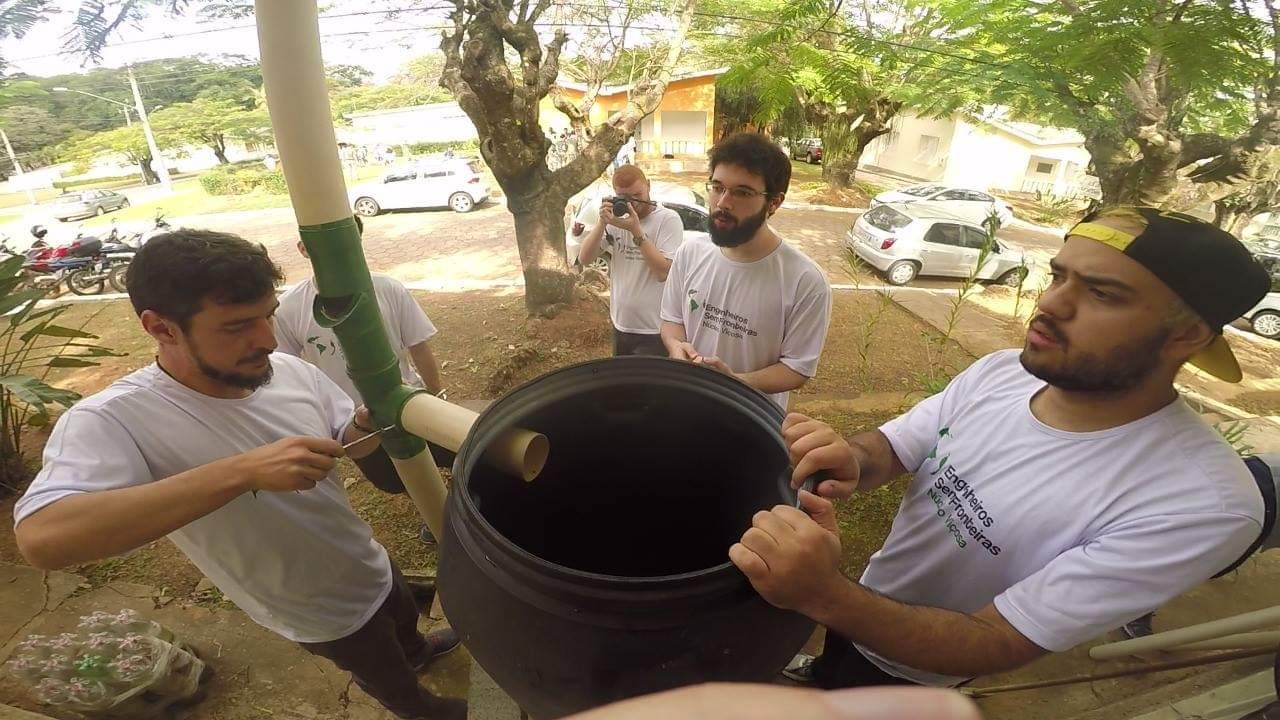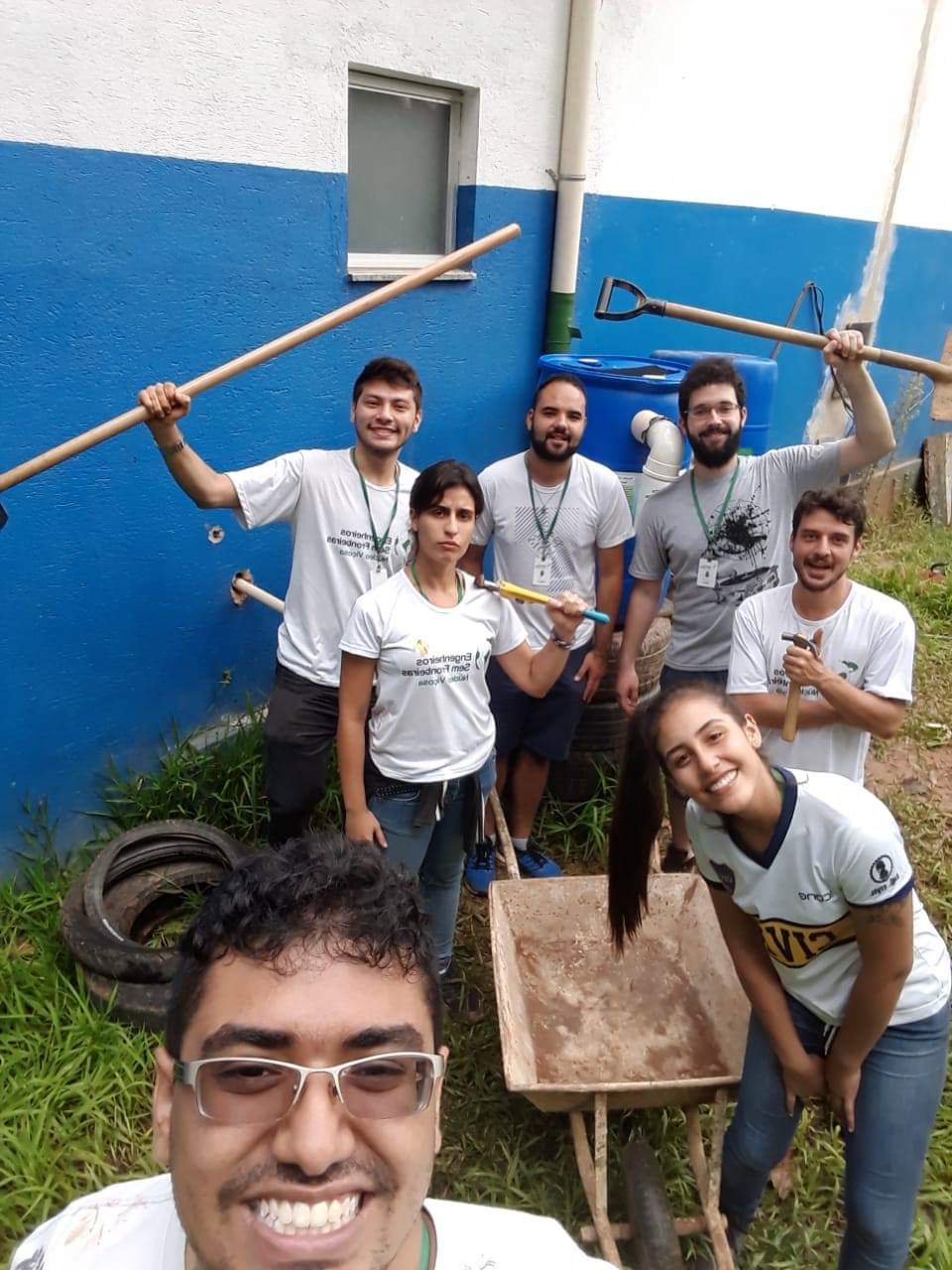Reducing Water Scarcity in Viçosa: AMANA Project - Rain Water Reuse
Description
Viçosa has faced recurrent problems on water supply and decreed Emergency Situation due to water scarcity. The classes at the university were at risk to be suspended which results in loss not just for students but to the great city economy that is based on floating population. A rotation on water supply is applied among the city neighbors and that harms the communities. In schools and day-care centers, children who already live daily with the precariousness of structure are once again undermined as the cleanliness of classrooms, restrooms and the use of sanitary discharge is not possible.
This project had as a main objective to promote the water sustainable use through the rain water capitation and reuse as for irrigation, gardening, sanitary discharges and cleaning, replacing the potable water that is in line with the Goal 6: to ensure availability and sustainable management of water and sanitation. Furthermore, an awareness campaign was held to discuss the sustainable and rational use of water through speeches in the benefited institutions with the project, educative material was distributed and the installation of gardens to illustrate the water reuse, that is in line with AGENDA 2030 (target 6b) desire to support and strengthen the participation of local communities in improving water and sanitation management. The water capitation model consists of coupling the chute system, a filter system, discharge system, and a reservoir. The filter is used to remove bigger impurities as leaves, twigs, etc., that are dragged from the chute by the water. The discharge system aims to remove the dust that is dragged by the firsts rainfalls. The reservoir is closed and may be often cleaned. To eliminate pathogens that comes from bird feces and other contaminants, it is recommended the use of sanitary water in a proportional quantity to do the water chlorination. The discharge is calculated within the roof area being that to 1m2 must be discharged 1 litter of water. Also, it is possible to relate the objective of this project to the target 6.4 as we wish to improve water-efficiency and ensure sustainable withdrawals and supply of water for people facing water scarcity in Viçosa, MG.
Since our first installation, there is a concern that the system can attend the schools' demand. To make sure the system would work, we first installed a prototype at our headquarters, in 2017. This module had the storage capacity of 250 liters, enough for cleaning our place. The module met expectations and confirmed the project’s scalability, impacting directly our members besides it motivated partners and the community to finance the project. Still in 2017, after the project validation, we searched the city area to choose our first beneficiary. The Almiro ParaÃso school (AP) was facing major problems on water supply. As it was located in a rural area, the water supply was made through an artesian well from where the water was extracted to be consumed by students and employees. From that, we decide to install a module with storage capacity of 500 liters so it could ensure water supply in drought periods. At the end of 2017, the members of AMANA Project designed and installed our biggest module till now with 4500 L store capacity located at the Dr. Januário de Andrade Fontes Educational Center where the water consumed was too high as it attended around 900 people. As for the Almiro ParaÃso school, this second project promoted autonomy and water economy for the institution, besides the water storage during drought periods. Lastly, at the beginning of 2018, the AMANA Project planned and executed the rainwater capitation system for Professor Pedro Gomide Filho school, placed at the highest area in Viçosa. The institution faced serious problems as low pressure and lack of water to maintain its activities. So it was decied to install a system with 3000 L storage capacity and the administration verified a reduction of the water lack. This last system, had the best efficacy, of the 3 we installed, costing 40% of the first system installed, indicating that the efficiency raised. Also, it is important to highlight that all the filters, discharges, pipe fittings were planned, designed and executed by AMANA Project members, as well the system maintenance. For all system parts were adopted low income solutions and high efficacy which increases the solution scalability and created a fertile environment for innovation.
It is possible to conclude that this simple system was capable to improve the water management and to deal with the water scarcity that these places were dealing due to the water crisis in Viçosa. We aim to expand and take AMANA Project to other institutions, schools and communities so we impact more lives and also contribute to water-use efficiency. We hope to find more people interested in investing in our project not just with money but with time, disclosure, recognition and commitment.
SDGS & Targets
Deliverables & Timeline
Resources mobilized
Partnership Progress
| Name | Description |
|---|
Feedback
Action Network


Timeline
Entity
SDGs
Region
- Latin America and the Caribbean
Geographical coverage
Photos



Website/More information
Countries
Contact Information
Cleuller Camilo da Costa Vieira Silva, President
